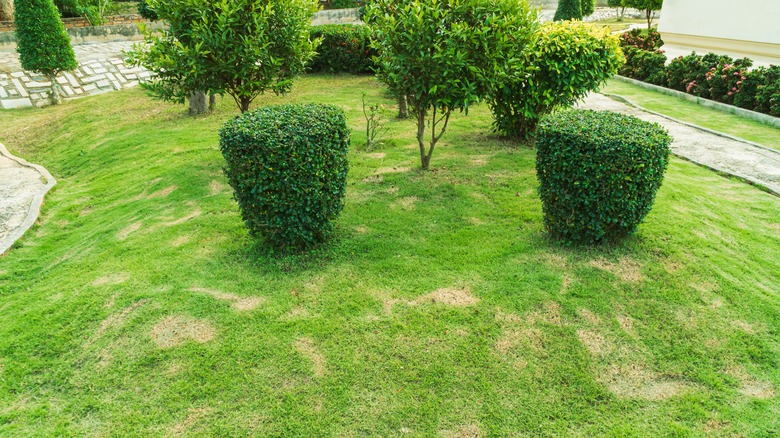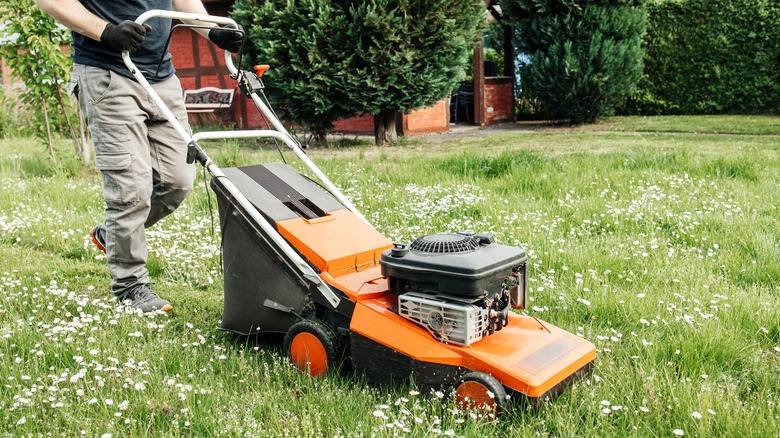Early Signs Of Rust Fungus On Your Grass (And How To Treat It Quickly)
Rust fungus, despite a name that would make homeowners think it would grow on iron, is a notorious nuisance when it comes to lawns. This fungal disease, primarily caused by the fungi in the genus Puccinia, thrives in conditions where moisture is ample and airflow minimal, which means that unkempt lawns are a popular breeding ground. Essentially, what you're dealing with when rust fungus invades is a case of plant parasitism that is detrimental to grass health — small infestations might only cause a color change but larger ones can weaken your lawn to the point that it won't survive common stressors like drought.
Identifying rust fungus in your grass early is crucial for a quick recovery. The initial giveaway is typically yellowing patches or small dots dispersed across the blades — sort of like an unfortunate case of chickenpox, but on your grass. As the fungal infection progresses, you might notice the development of pustules — tiny, blister-like formations that range from rusty orange spots to tawny, brown, or even black in their mature form.
Other signs might be a bit more obvious, such as noticing an inexplicable orange tinge to your shoes or pant legs after a stroll across your seemingly healthy lawn. If you look like you've rolled in Cheeto dust, then you've encountered the notorious powdery residue released by ruptured pustules. In advanced stages, rust fungus weakens the turf, resulting in thinned patches that leave your lawn with a sad, shredded appearance.
How do you get rid of rust fungus?
Tackling rust fungus starts with adjusting your mowing routine; regularly cut the grass at the recommended height (depending on your type of grass) to remove infected tips and reduce the fungal load. Next, tweak your watering schedule. Watering in the morning is ideal –- this makes sure that grass blades have time to dry by nightfall, which means less moisture for fungus to take advantage of. Moreover, infrequent deep watering is preferred over frequent watering to promote robust root development.
Balancing soil fertility also plays a pivotal role, as rust fungus tends to exploit lawns suffering from nutrient deficits or imbalances. Check the health of your soil and apply fertilizers based on recommendations to ensure that your lawn has the right nutrients. Thatch management is another key strategy — dethatch your lawn often to prevent root stress and allow for optimal water and nutrient flow. Consider using a core aerator on compacted areas.
One easy solution is to plant resistant grasses like perennial ryegrass and Kentucky bluegrass. These varieties can inherently withstand certain diseases, providing a built-in line of defense. While fungicides exist as a last resort, they should complement, rather than substitute, good cultural practices. If you do find yourself reaching for chemical control, timing is important–- apply before or at the very onset of infection to maximize efficacy. Nonetheless, patience is key as rust tends to peter out naturally before freezing temperatures prevail, allowing grass to rebound come spring.

